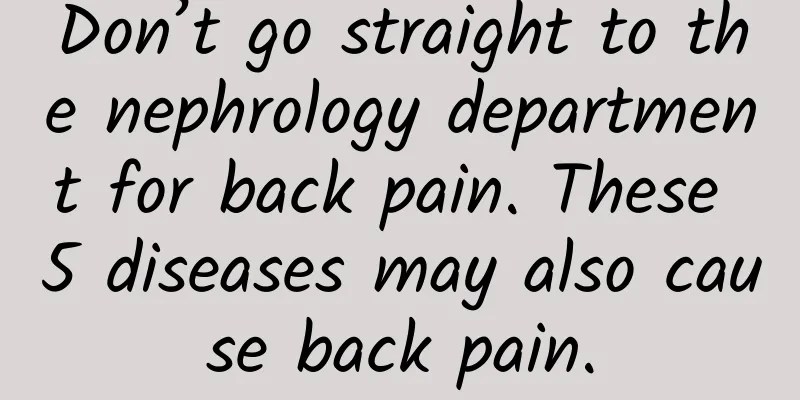"Fighting cancer with poison"! The virus modified by Chinese scientists can accurately and effectively kill cancer cells!

|
When talking about viruses, most people's first reaction is disease, infection, and disaster, such as influenza, AIDS, and hepatitis B, which have cost humanity a heavy price. Some people have also wondered, are there no viruses that are beneficial to humans? It’s true. Some viruses can be used to fight cancer! Science is creating oncolytic viruses that are beneficial to humans, including screening natural or genetically engineered viruses that can selectively replicate in tumor tissues, and then infect and kill tumor cells with little or no effect on normal cells. Recently, Zhao Yongxiang's team in my country has made remarkable research progress in this field. The Newcastle disease virus (NDV) they modified can effectively kill cancer cells through a precise hyperacute rejection mechanism, allowing oncolytic viruses to enter the "hyperacute immunity" era. Let's briefly talk about how oncolytic viruses fight cancer. Image from the journal website What are oncolytic viruses? Can viruses lyse cancer cells? Cancer cells are difficult to deal with because they not only grow wildly, but also deceive the immune system, making the body treat them as "our own" and letting them grow. Oncolytic viruses are like a special force specifically targeting cancer cells. They can infiltrate cancer cells and "detonate" inside, causing cancer cells to disintegrate in chaos, or break their disguise and activate the immune system, allowing the body to re-recognize and attack cancer cells. There are currently 8 types of oncolytic viruses in common use, each with its own advantages and disadvantages: From reference [2] Theoretically, the main advantage of oncolytic immunotherapy is that oncolytic viruses can be designed to target specific tumor cells with little damage to healthy cells; therefore, compared with traditional surgery, radiotherapy, and chemotherapy, systemic side effects can be significantly reduced. Therefore, this is also a hot research field. As of August 25, 2023, 227 oncolytic virus-related clinical trials have been registered, of which 8 have entered Phase III clinical trials, mainly targeting melanoma, bladder cancer, head and neck cancer, liver cancer, ovarian cancer, etc. Currently, there are 4 oncolytic virus therapies on the market worldwide. However, these methods still face difficulties such as "mainly intratumoral injection and cannot target widespread metastatic cancer" and "the virus will be cleared by the human immune system", which are the key to this research breakthrough. From reference [3] China's breakthrough: Hyperacute rejection reaction makes oncolytic virus stronger! Faced with the dilemma of existing oncolytic virus therapy, how can oncolytic viruses play a greater role? Chinese scientist Zhao Yongxiang's team gave a bold answer - using the human body's hyperacute immune response to double the lethality of oncolytic viruses! First, they selected Newcastle disease virus (NDV), which is quickly recognized and inhibited by the type I interferon pathway after infecting normal cells, so it is not easy to harm normal cells. However, cancer cells lose this function, so these viruses can replicate in cancer cells. In addition, Zhao Yongxiang's team also made a key innovation. They implanted a pig α1,3GT gene into NDV, so that after the virus infects cancer cells, it can produce a special antigen on their surface - α-Gal. This seemingly minor change triggers an extreme immune response in the human body: hyperacute rejection. Simply put, humans naturally carry a large number of antibodies specifically targeting α-Gal . Once this "foreign molecule" is detected, the immune system will immediately launch an all-out attack. Zhao Yongxiang's team took advantage of this feature to turn cancer cells disguised as "our own people" into the "most wanted criminals" of the immune system. When NDV-GT (Newcastle disease virus with α1,3GT gene) infects cancer cells, these "marked" cancer cells quickly trigger an immune storm, leading to** local blood vessel blockage, large-scale cancer cell death, and activating the systemic anti-cancer immune response. ** This means that not only the primary tumor will be cleared, but also distant cancer cell metastases will be hunted down. In monkey liver cancer model experiments, this oncolytic virus successfully caused the tumor to completely disappear within 3 months without any serious side effects. Color Doppler ultrasound showed that the monkeys' tumors regressed or even disappeared after NDV-GT treatment Subsequently, in a Phase I clinical trial involving 20 patients with advanced cancer, 90% of the patients had their disease under control, and some patients' tumors even shrank significantly or completely disappeared. For example, a patient with advanced ovarian cancer and extensive peritoneal metastasis (P2) had a significant reduction in tumor size after receiving NDV-GT treatment, achieving partial remission, and maintained this remission for up to 12 months. This breakthrough proves that **oncolytic viruses can not only be a powerful tool for cancer treatment, but also improve the efficacy through the "secondary amplification" mechanism of the immune system, so that cancer patients can truly benefit. **It should be noted that although NDV-GT therapy shows promising potential, due to the small sample size of the trial and the lack of a control group, its efficacy needs to be further evaluated and verified by a randomized controlled trial with a larger sample. Are oncolytic viruses really safe? Are there any side effects? Oncolytic viruses can accurately attack cancer cells, but after all, it is a live virus, and safety is still the biggest concern for patients. Will it infect healthy cells? Will it trigger an overly strong immune response? Are the side effects controllable ? Scientists have explored these issues through research. First of all, oncolytic viruses rarely injure healthy cells . Cancer cells have weak antiviral capabilities, while healthy cells can effectively eliminate viruses, so oncolytic viruses basically only replicate in cancer cells. The research of Zhao Yongxiang's team at Guangxi Medical University went a step further. They implanted the α1,3GT gene into the Newcastle disease virus (NDV) to trigger a hyperacute immune response, allowing the immune system to accurately identify and eliminate cancer cells, while healthy cells are almost unaffected. Secondly, existing oncolytic virus therapies usually do not trigger uncontrollable immune responses. Currently approved oncolytic virus therapies T-VEC and H101 have shown that they may trigger local immune inflammatory responses, manifested as mild fever, fatigue, and local redness and swelling, which usually resolve within 24 to 48 hours. The NDV-GT virus of Guangxi Medical University improves the anti-cancer effect by enhancing local immune attacks while avoiding the risk of systemic inflammation. Although no serious side effects have been found in current research and clinical trials, in the future expansion of clinical trials and practical applications, we must pay close attention to possible rare but serious adverse reactions, as well as the long-term effects of the virus on the immune system. Furthermore, oncolytic viruses do not spread among the population . Oncolytic viruses are designed to have their ability to spread removed, and studies have shown that patients receiving treatment do not spread the virus to others. In clinical trials, no cases of medical staff or family members being infected with the NDV-GT virus due to contact with patients were found. Nevertheless, in actual applications, it is still necessary to strictly follow the relevant biosafety regulations and operating procedures to ensure that the virus does not spread accidentally. In terms of side effects, existing studies have shown that oncolytic virus therapy is generally tolerable, mainly manifested as short-term "flu-like symptoms" and local injection reactions. In a clinical trial at Guangxi Medical University, 20 patients with advanced cancer received NDV-GT virus treatment, and 90% of their conditions were under control without severe side effects. Copyright images in the gallery. Reprinting and using them may lead to copyright disputes. In the future, scientists will further optimize the precise regulation technology of the virus to ensure that it is activated only in cancer cells, and explore personalized dosage adjustments to further reduce side effects. Oncolytic virus therapy is becoming safer and more efficient, giving cancer patients new hope. Finally, it is important to point out that, except for the oncolytic virus therapies that have been approved for marketing and are mentioned in the previous table, other oncolytic virus therapies (including NDV-GT therapy) are still in the experimental stage , and their exact therapeutic effects and long-term effects have not been rigorously verified. Both doctors and patients need to be cautious. References [1]Zhong L, Gan L, Wang B, et al. Hyperacute rejection-engineered oncolytic virus for interventional clinical trial in refractory cancer patients. Cell. 2025;188(4):1119-1136.e23. [2]Reddy R, Yan SC, Hasanpour Segherlou Z, et al. Oncolytic viral therapy: a review and promising future directions. J Neurosurg. 2023;140(2):319-327. [3]Shalhout SZ, Miller DM, Emerick KS, et al. Therapy with oncolytic viruses: progress and challenges. Nat Rev Clin Oncol. 2023;20(3):160-177. Planning and production Author: Jiang Yongyuan, Master of Internal Medicine, Third Military Medical University Review | Pan Zhanhe, Chief Physician, Master Supervisor, Department of Oncology, Zhongshan Hospital, Xiamen University Planning丨Ding Zong Editor: Ding Zong Proofread by Xu Lailinlin The cover image and the images in this article are from the copyright library Reprinting may lead to copyright disputes |
>>: Inflammation of blood vessels?
Recommend
Where are the Mogao Grottoes in Dunhuang? What are the historical changes of the Mogao Grottoes in Dunhuang?
Mogao Grottoes were first built during the reign ...
It has been 9 years since the first successful tumor immunotherapy. Where is the progress now?
The topic of "the dark side of cancer treatm...
Second trimester Down syndrome screening results
Generally speaking, medicine leaves room for inte...
Will ovulation occur on the 11th day of menstruation?
By calculating the ovulation period, ovulation ma...
Is it easy to get pregnant if you have sex right after your period? What should you do?
Many female friends will ask a question about the...
Is uterine posterior wall fibroids serious?
Uterine posterior wall fibroids are actually a re...
Why do children always have fever at night? During the epidemic, parents should do these 3 things!
I believe many parents have had this experience: ...
The benefits of women patting their armpits
Nowadays, many Chinese medicine lectures will int...
Mole diagram on the palm of a woman's left hand
A mole on the center of the palm indicates wealth...
Symptoms of acidosis in early pregnancy
Pregnancy is a difficult process for women, and t...
Leucorrhea tofu dregs
By understanding whether female secretions are no...
Painless abortion usually takes a few days to rest
Rest for at least 1 week after an abortion, prefe...
Does your girlfriend have a strong body odor?
If a woman has an unpleasant odor from her privat...
How long does it take to get menstruation after curettage?
Curettage is actually what we often call curettag...
What to do if you have your period while swimming
Normally, you should not go swimming during menst...









